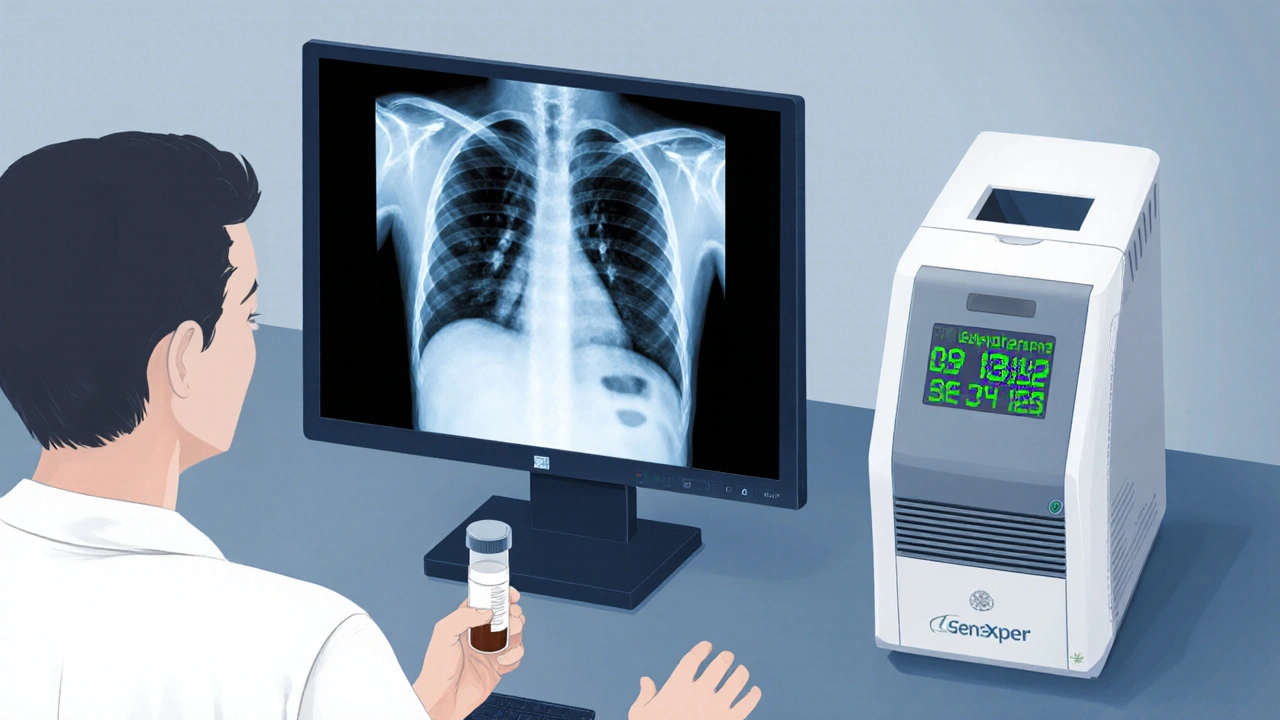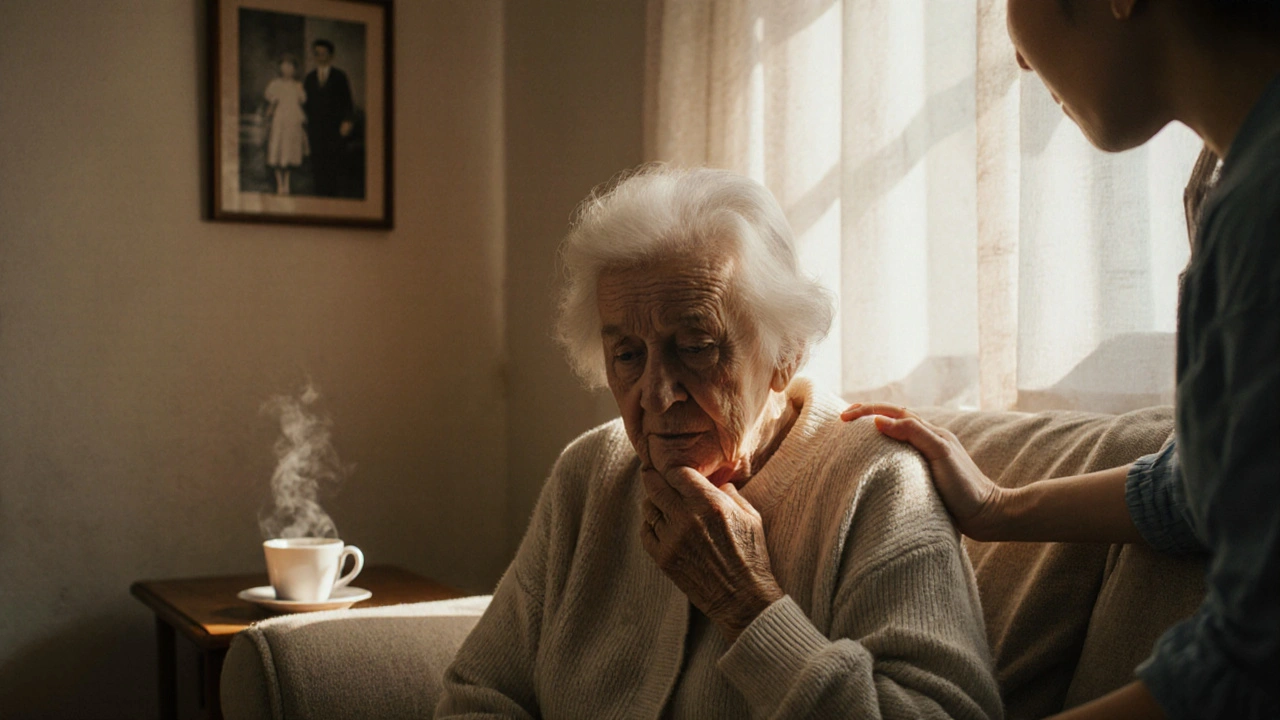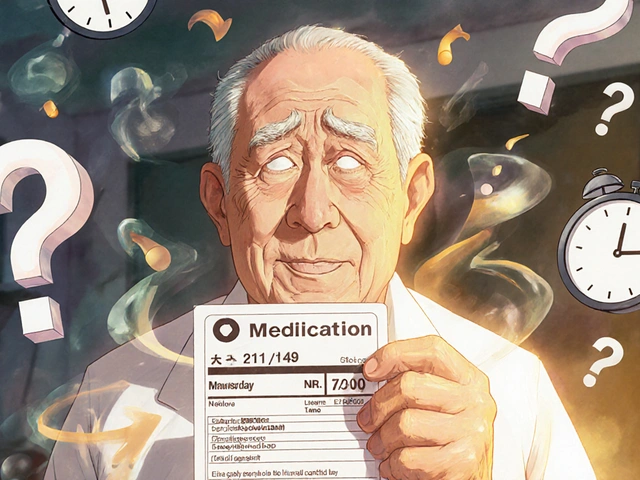Pulmonary TB Risk Assessment for Elderly Patients
Assessment Criteria
This tool evaluates potential risk factors and symptoms that may indicate pulmonary tuberculosis in elderly patients. Select your responses below to get an assessment.
Important Note
This tool is for educational purposes only and does not replace professional medical evaluation. Consult a healthcare provider for accurate diagnosis.
Select symptoms and risk factors to see your assessment result.
| Test | Purpose |
|---|---|
| Chest X-ray | First-line imaging for TB signs |
| Sputum Smear | Detects acid-fast bacilli |
| GeneXpert MTB/RIF | Rapid molecular test for DNA and resistance |
| IGRAs | Differentiates latent from active infection |
| Drug | Duration |
|---|---|
| Isoniazid | 6 months |
| Rifampicin | 6 months |
| Ethambutol | 2 months (intensive phase) |
| Pyrazinamide | 2 months (intensive phase) |
- Quick look: pulmonary tuberculosis in the elderly shows atypical symptoms and higher complications.
- Key risk drivers include weakened immunity, chronic diseases, and crowded living settings.
- Early diagnosis relies on chest imaging, sputum tests, and modern molecular tools.
- Standard therapy uses four antibiotics for six months, but dosing must be tweaked for older bodies.
- Prevention hinges on vaccination, infection control, and regular health checks.
Older adults often think they’ve seen it all, but lung infections can still catch them off guard. Pulmonary Tuberculosis is a contagious disease caused by the bacterium Mycobacterium tuberculosis that primarily attacks the lungs. When the disease strikes seniors, the picture looks different - symptoms are subtler, risks pile up, and treatment needs extra care. This guide walks you through what to watch for, why older bodies are more vulnerable, and how modern medicine tackles the infection.
What Exactly Is Pulmonary Tuberculosis?
The culprit is Mycobacterium tuberculosis, a slow‑growing, acid‑fast bacterium that spreads through airborne droplets when an infected person coughs or sneezes. Once inhaled, the bacteria settle in the alveoli, prompting an immune response that can contain the infection (latent TB) or let it progress to active disease, which we call pulmonary tuberculosis.
In the elderly, the line between latent and active disease blurs because the immune system weakens with age - a process known as immunosenescence. This makes it easier for dormant bacteria to reactivate and cause lung damage.
Why Seniors Face Higher Risks
Age alone isn’t the villain; it’s the collection of factors that come with getting older. Here’s a quick rundown:
- Immunosenescence - a gradual decline in T‑cell function that lowers the body’s ability to keep TB in check.
- Chronic illnesses such as diabetes, chronic obstructive pulmonary disease (COPD), and chronic kidney disease, which each raise TB susceptibility.
- Living environments that crowd older adults together - for example, care homes or multi‑generational households.
- Malnutrition, a common issue in seniors, further impairs immune defenses.
- Use of steroids or other immunosuppressive medications for arthritis or autoimmune conditions.
All these elements stack up, turning a disease that might be mild in a younger person into a serious threat for an older adult.
Typical and Atypical Symptoms in Older Adults
Classic TB signs - persistent cough, night sweats, weight loss, and fever - still appear, but seniors often present differently. Look for these patterns:
- Persistent cough that may be dry or produce scant sputum. In many seniors, the cough lasts weeks without improvement.
- Low‑grade fever that spikes at night, sometimes mistaken for a simple infection.
- Unexplained weight loss - even a 5‑10% drop over a month can be a red flag.
- General fatigue or loss of appetite, often reported as “just feeling old.”
- Chest pain or shortness of breath that worsens with exertion.
- Confusion or delirium, especially in frail elders - an atypical presentation that can delay diagnosis.
Because symptoms overlap with other age‑related conditions, a high index of suspicion is essential. If any of the above persist beyond two weeks, move to diagnostic testing.
Key Risk Factors to Keep an Eye On
Beyond the general aging factors, certain conditions dramatically increase TB risk:
| Risk Factor | Impact on TB Reactivation |
|---|---|
| Diabetes Mellitus | Three‑fold higher odds of active TB |
| Chronic Kidney Disease (stage 3+) | Immune suppression and frequent hospital visits increase exposure |
| Long‑term Corticosteroid Use | Reduces T‑cell activity, facilitating bacterial growth |
| Living in Congregate Settings | Higher chance of airborne transmission |
| Malnutrition (BMI < 18.5) | Compromises cellular immunity |
Healthcare providers should screen older patients who have any of these risk factors, especially if they’ve traveled to high‑TB‑incidence regions.

How Diagnosis Works for Seniors
Getting the right test at the right time can prevent weeks of uncertainty. The diagnostic pathway typically includes:
- Chest X‑ray - first‑line imaging that reveals infiltrates, cavitations, or nodular patterns suggestive of TB.
- Sputum smear microscopy - looks for acid‑fast bacilli, though sensitivity drops in older adults who produce less sputum.
- GeneXpert MTB/RIF - a rapid molecular test that detects bacterial DNA and rifampicin resistance within two hours.
- Interferon‑Gamma Release Assays (IGRAs) - blood tests that help differentiate latent from active infection when imaging is inconclusive.
- Culture on solid or liquid media - the gold standard, though it takes 2‑8 weeks; still useful for drug‑susceptibility testing.
Because older patients often have comorbid lung disease, radiologists may misinterpret TB signs as COPD exacerbations. Cross‑checking imaging with molecular results is the safest bet.
Standard Treatment Regimen and How It Changes for the Elderly
The World Health Organization recommends a six‑month regimen that combines four first‑line antibiotics. For seniors, dosing must consider renal and hepatic function.
| Drug | Typical Dose (Adults) | Duration | Common Side Effects |
|---|---|---|---|
| Isoniazid | 5mg/kg (max 300mg) | 6months | Liver toxicity, peripheral neuropathy |
| Rifampicin | 10mg/kg (max 600mg) | 6months | Hepatotoxicity, orange bodily fluids |
| Ethambutol | 15-25mg/kg (max 1.6g) | 2months (intensive phase) | Optic neuritis, color vision loss |
| Pyrazinamide | 20-30mg/kg (max 2g) | 2months (intensive phase) | Hepatotoxicity, hyperuricemia |
For patients over 65, clinicians often reduce the isoniazid and rifampicin doses by 25% if liver enzymes are elevated. Ethambutol dosing may be adjusted for reduced kidney clearance. Therapeutic drug monitoring (TDM) isn’t routine but can be valuable when multiple medications are involved.
A cornerstone of successful therapy is Directly Observed Therapy (DOT). A nurse or trained volunteer watches the patient take each dose, ensuring adherence and catching side‑effects early - a practice especially useful for seniors who might forget doses.
Managing Side Effects and Supporting Recovery
Older bodies react differently to anti‑TB drugs. Here’s how to keep them safe:
- Baseline liver function tests (ALT, AST, bilirubin) before starting therapy; repeat monthly.
- Vitamin B6 (pyridoxine) supplementation (25-50mg daily) to prevent isoniazid‑induced neuropathy.
- Regular visual acuity checks after the first two weeks of ethambutol - early detection of optic changes avoids permanent damage.
- Hydration and diet counseling to reduce pyrazinamide‑related hyperuricemia.
- Consider drug‑interaction reviews: many seniors take antihypertensives, statins, or anticoagulants that can clash with rifampicin.
Physical therapy helps maintain lung capacity, while nutritionists can design high‑protein, calorie‑dense meals to counteract weight loss.
Prevention: Keeping TB at Bay in Older Populations
Vaccination with BCG is less common in the UK, but it still offers protection against severe forms of TB in children and may lower infection rates in high‑risk adults. For the elderly, the focus shifts to infection control:
- Screen new residents in care homes with a symptom questionnaire and, when indicated, a chest X‑ray.
- Implement airborne precautions (N95 masks, negative‑pressure rooms) when an active case is identified.
- Promote smoking cessation - smoking triples TB risk and worsens outcomes.
- Encourage annual flu and pneumococcal vaccinations to reduce overlapping respiratory illnesses.
- Provide nutritional support programs to address malnutrition, a key modifiable risk factor.
Early detection and prompt treatment not only cure the individual but also cut community spread, which is vital in densely populated elder care settings.
Frequently Asked Questions
Can latent TB become active in someone over 65?
Yes. Immunosenescence, chronic diseases, and certain medications can weaken the immune system enough for dormant Mycobacterium tuberculosis to reactivate, turning a silent infection into active pulmonary disease.
Do older adults need a different TB treatment length?
The standard six‑month regimen stays the same, but dosage adjustments and closer monitoring of liver and kidney function are essential to avoid toxicity.
What are the most common side effects to watch for?
Liver enzyme elevation, peripheral neuropathy from isoniazid, visual disturbances from ethambutol, and joint pain or gout‑like symptoms from pyrazinamide are the top concerns. Regular labs and eye exams catch problems early.
Is BCG vaccination useful for seniors?
In low‑incidence countries like the UK, BCG is not routinely given to adults. Its protective effect wanes with age, so the focus for seniors is on screening, infection control, and treating active disease promptly.
How does Directly Observed Therapy help older patients?
DOT ensures each dose is taken, reducing missed pills due to memory issues or complex schedules. It also provides a regular check‑in point to monitor side effects and reinforce education.






